When people picture a safari, they usually think dusty tracks and a bouncing Jeep. I used to, too.
Then I went on a water-based safari and everything changed. We glided along a river while zebras paused to drink.
No engine roar. Just the soft lap of water and birdsong. You see animals up close in a way road safaris rarely allow.
Small, bright birds. Hippos you can study for minutes. Quiet, unforgettable moments.
If you want a wilder, more intimate safari, this is it. Here’s why the water is the ultimate seat for animal watching.
Contents
Botswana’s Water-Based Safari Paradises
While many countries offer incredible experiences, Botswana is arguably the most famous for water exploration.
It is home to two of the world’s most spectacular aquatic environments, each offering a completely different but equally magical adventure.
The Okavango Delta
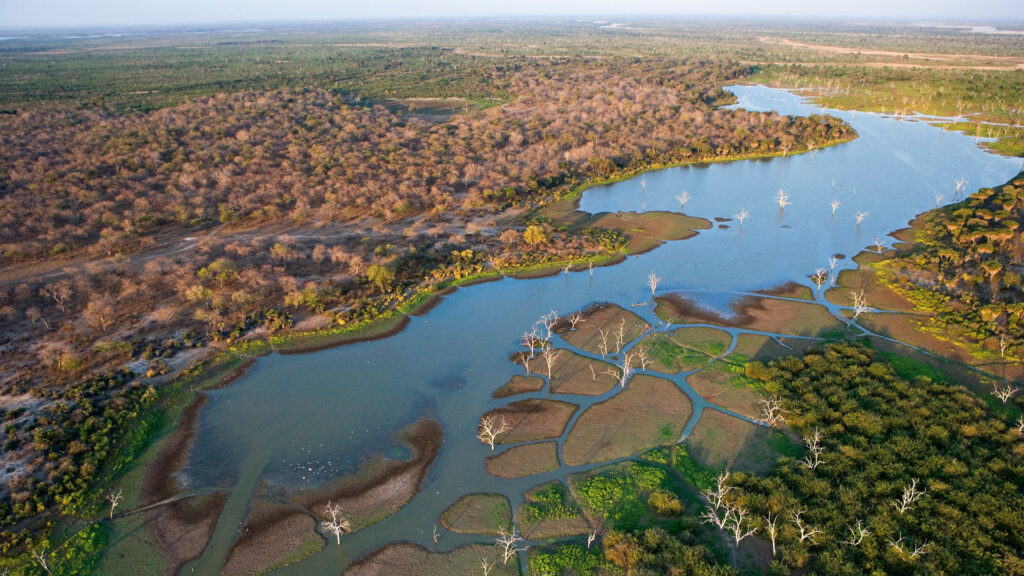
Traveling by mokoro, a traditional dugout canoe, is an essential part of any Okavango Delta safari. It’s a journey into the heart of a pristine ecosystem and its ancient human history.
The Bayei people, who migrated to the Delta in the 18th century, used the sleek canoes for hunting and transportation through the labyrinthine waterways.
Today, as your guide poles you gently through channels carpeted in water lilies, you become part of the landscape.
The silence is profound. You’re no longer just looking for the “Big Five.” Instead, your world shrinks to the immediate, beautiful details. You notice the iridescent shimmer of a dragonfly’s wings and hear the soft chirps of tiny reed frogs.
This slow pace makes the mokoro the perfect platform for birding and photography, allowing you to get incredibly close to species like the elusive slaty egret without causing a disturbance.
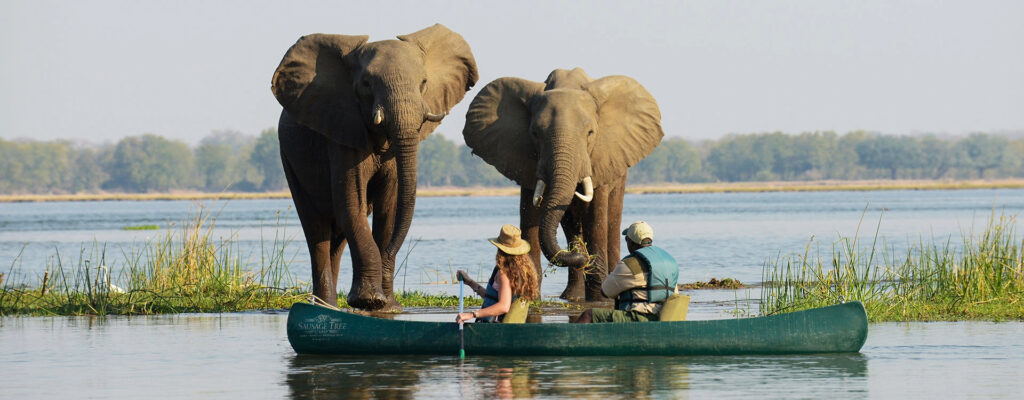
You get ample time for conversation with your Indigenous guide, who can share stories of their history, folklore, and traditions. You’re exploring a UNESCO World Heritage Site, a vast inland delta that drains into the Kalahari sands, supporting an astonishing 130 mammal species and over 480 species of birds.
The best time for a mokoro trip is during the dry season, from roughly June to August, when the annual floodwaters from Angola have filled the channels, concentrating wildlife along the banks.
Where to Stay: Head to the Moremi Game Reserve on the eastern side of the Delta. Luxury lodges like Sanctuary Chief’s Camp and the new Tawana offer exceptional access to these pristine waterways.
The Chobe River
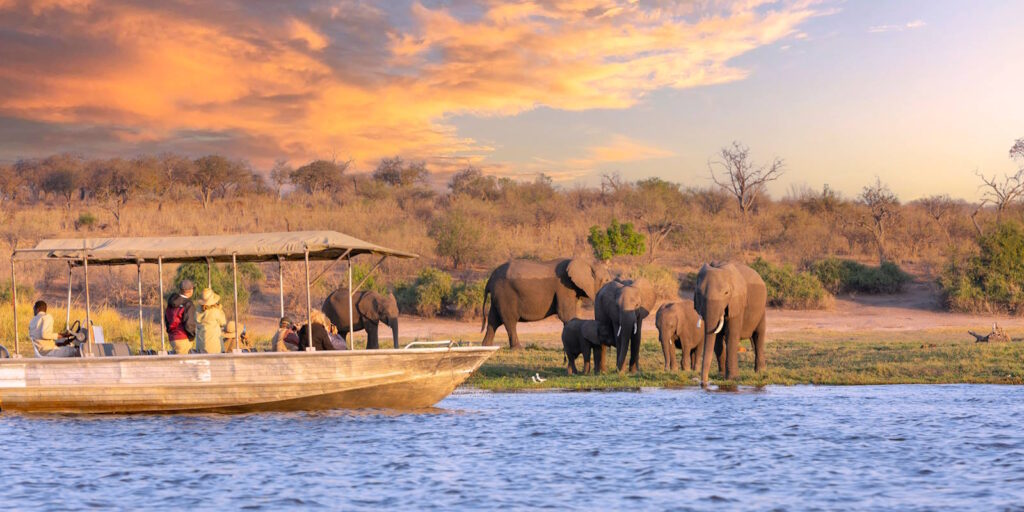
If it’s elephants you’re after, a boat safari on the Chobe River is non-negotiable. Chobe National Park is home to Africa’s largest elephant population, estimated at a staggering 120,000 individuals.
During the dry season from May to October, these gentle giants crowd the riverbanks in enormous herds to drink, play, and cool off in the muddy shallows.
From the water, you have a front-row seat to this incredible spectacle. The experience is about witnessing a fundamental principle of the African wild: life congregating around a vital resource.
On a lucky day, you can even witness one of nature’s most unique sights—elephants swimming across the river to Namibia, their trunks held high like snorkels.
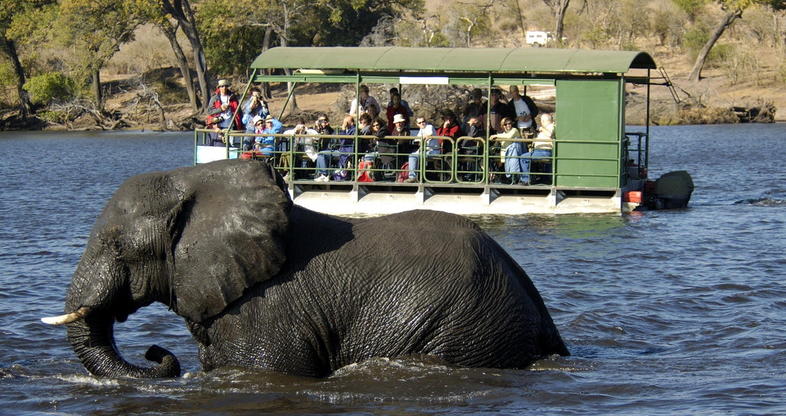
Photographers should time their cruise for the end of the day. The sunsets here are legendary, especially when massive elephant herds are silhouetted against a fiery sky.
Where to Stay: DumaTau Camp overlooks the Osprey Lagoon in the Linyanti region, famous for its elephant mega-herds. Near the park entrance, Sanctuary Chobe Chilwero offers panoramic river views from its hilltop perch.
Related: 10 Budget Safari Hidden Gems: Double the Wildlife for Half the Price!
Discovering Africa’s Best Boat Safari Destinations
Botswana may be the heartland, but the magic of exploring from the water extends across the continent.
Each of these destinations proves that the water-based safari is a diverse category of travel with an adventure for every taste.
Rufiji River, Tanzania
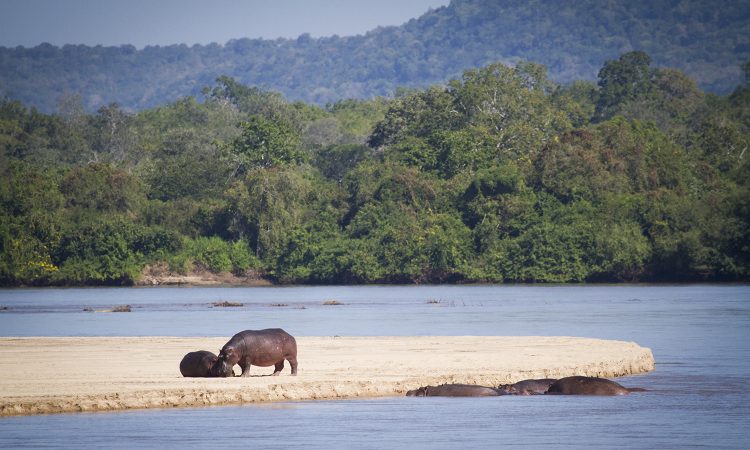
For those seeking a wilder, more old-fashioned safari experience, Nyerere National Park calls. Formed from the legendary Selous Game Reserve in 2019, it is the largest national park in Africa and remains remarkably untouched.
Here, the mighty Rufiji River rushes through marshy floodplains, bringing life to the vast wilderness. A boat trip here during the dry season (June to October) reveals unusually large groups of wildlife, including lions, elephants, giraffes, and zebras, as they come to the water’s edge to drink.
Where to Stay: Sand Rivers Selous and Laba Laba Siwandu are remote, luxurious lodges that offer an authentic escape far from the tourist crowds.
Kazinga Channel, Uganda
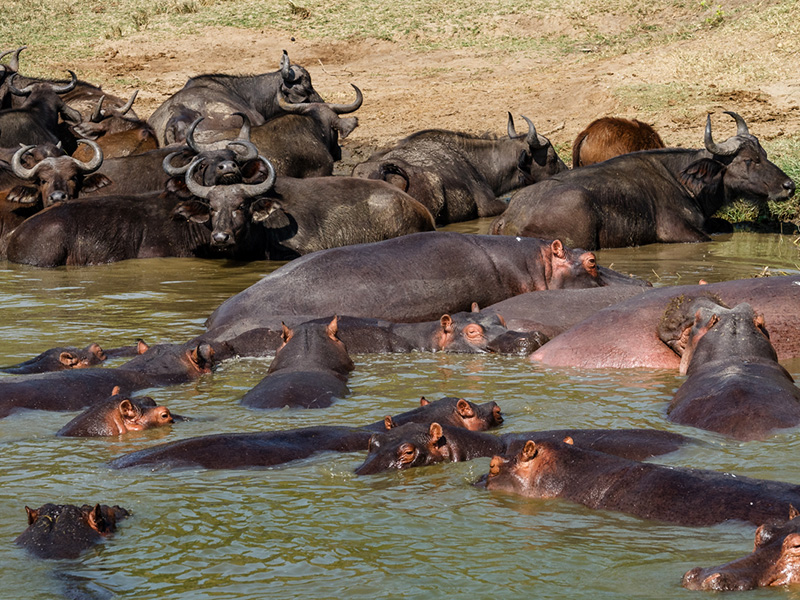
While Uganda is famous for its gorilla treks, another animal takes center stage on the Kazinga Channel: the hippo.
This natural waterway, which slices through Queen Elizabeth National Park, is home to one of the world’s densest concentrations of these toothy mammals, with thousands calling the channel home.
A boat safari here is extremely popular because you don’t have to travel far to find an abundance of species. Elephants, buffalo, crocodiles, and antelopes are almost guaranteed sightings, and you might even spot a lion or leopard in the distance at dusk.
The best viewing is during the dry seasons from June to September and December to February.
Where to Stay: The beautifully restored Kyambura Gorge Lodge overlooks the park, while
Mweya Safari Lodge sits on a peninsula with direct views of the channel.
Upper Zambezi River, Zambia & Zimbabwe
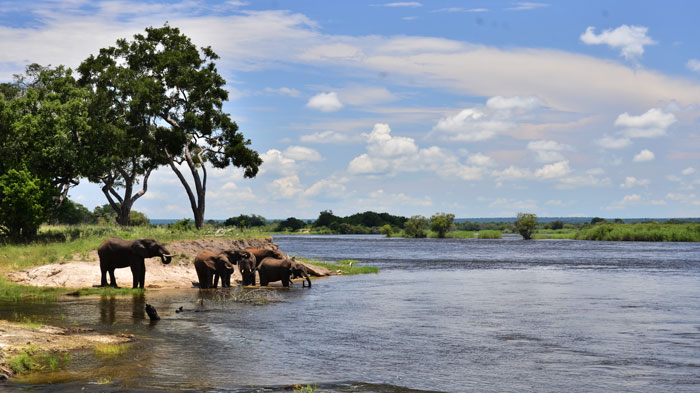
Many travelers visit Victoria Falls but miss out on exploring its lifeblood: the expansive Zambezi River.
Beyond the world’s largest single-drop waterfall, the Upper Zambezi is a lush, magical region best explored from the water. Instead of chasing game, the experience here is about soaking up the wonder of an African sunset on a traditional wooden dhow.
You can search for crocodiles and elephants along the shore or even try your hand at catch-and-release tiger fishing. The best time for a river cruise is during the dry season from May to October.
Where to Stay: You’ll want a property with plenty of riverfrontage. Matetsi Victoria Falls and
Mpala Jena Camp both offer luxurious stays with exceptional boat cruises.
Lake Naivasha, Kenya
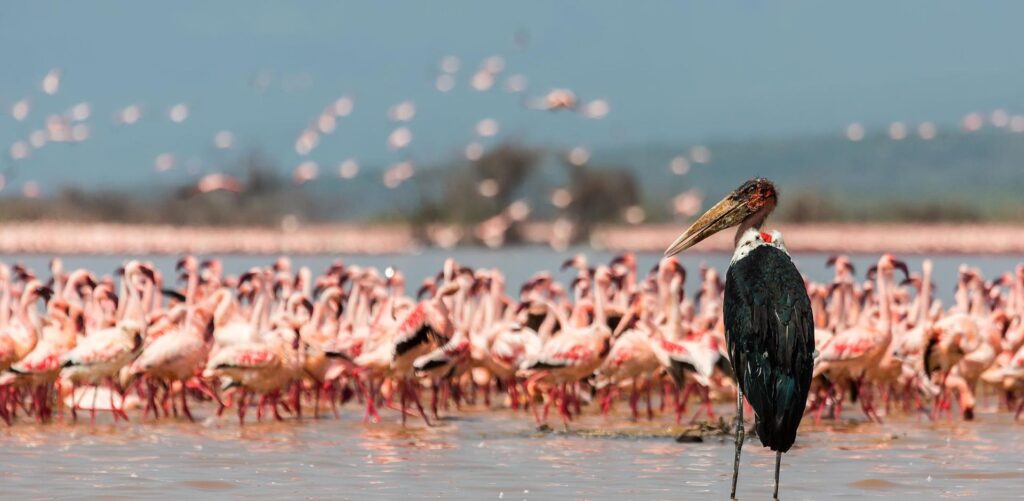
Birders, this one’s for you. Located just two hours from Nairobi, Lake Naivasha is a freshwater lake renowned for its exceptional bird viewing.
Listed as a Wetland of International Importance, its dense, swampy vegetation is an ideal habitat for waterfowl. Keep your binoculars handy to locate over 400 bird species, including the Goliath heron, saddle-billed stork, and majestic African fish eagle.
The lake is also home to over 1,500 chortling hippos. Plan your visit during the migratory season from October to March for the most spectacular sightings.
Where to Stay: The historic Loldia House sits on a private ranch on the lake’s shore, while Chui Lodge is tucked away in the Oserian Wildlife Sanctuary.
The Ultimate Water-Based Safari: Canoeing in Mana Pools

Here is one experience that stands above all others. Mana Pools National Park in Zimbabwe has earned a reputation for its gripping walking safaris.
But the park’s open floodplains also offer a network of canoe trails that bring you breathtakingly close to lions, leopards, crocodiles, elephants, and the enigmatic African wild dog.
Ambitious adventurers can paddle along the Zambezi River on a multi-day journey with a certified guide. You’ll stop along the way to camp—not glamp!—on the riverbanks.
Here, you are not a passive observer in a vehicle. You are an active participant, at eye-level with the giants of the animal kingdom. This vulnerability creates a visceral, heart-pounding connection to the wild that is impossible to achieve any other way.
For the best conditions, plan your trip for October or November, just before the heavy rains arrive.
Where to Stay: Tembo Plains Camp and Nyamatusi Camp provide luxurious bases from which to launch these incredible adventures.
Plan the Perfect Water-Based Safari
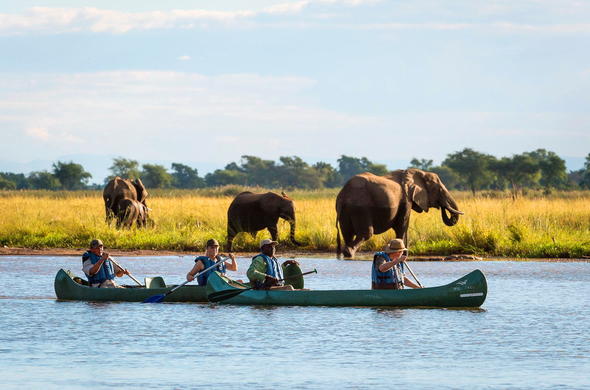
From a tranquil glide through lily pads to a thrilling paddle past bathing elephants, a safari from the water offers a perspective that will fundamentally change how you see the African wilderness.
It’s a chance to connect with nature on a deeper, more intimate level. So, the next time you dream of Africa, forget the dusty Jeep. The real magic is waiting on the water.
Location
Country
Star Attraction
Best Time to Visit
Okavango Delta
Botswana
Mokoro trips, cultural immersion, small species
June – August
Chobe River
Botswana
Massive elephant herds, swimming elephants
May – October
Rufiji River
Tanzania
Wild, remote safari with large wildlife groups
June – October
Kazinga Channel
Uganda
World’s densest concentration of hippos
June – Sept & Dec – Feb
Upper Zambezi River
Zambia & Zimbabwe
Sunset dhow cruises, scenery, relaxation
May – October
Lake Naivasha
Kenya
Exceptional birding (400+ species)
October – March
Mana Pools
Zimbabwe
Adventurous multi-day canoe expeditions
October – November